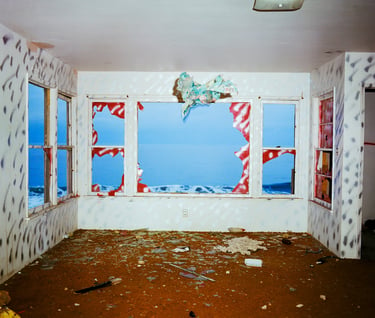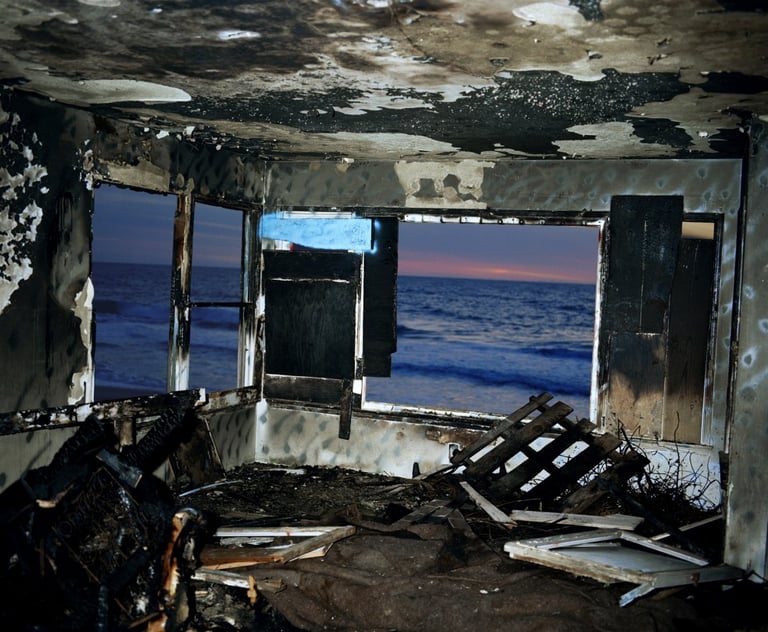John Divola’s Zuma Series: 1977 & 1978
Carmel Ni
12/31/2011


“In all my work there’s this notion of the melancholic.
You can make a photograph about the sublime, but you can’t make the sublime
itself; you can never make the equivalent of lying in a quarry at midnight,
looking at the moon. . . . Beauty is part of the language of that. I want [my
photographs] to be seductive, but they’re also about an unattainable desire.”
–John Divola
Part of this year’s Pacific Standard Time Initiative, MOCA’s Under the Big Black Sun showcases John Divola’s early and critically
acclaimed Zuma Series: 1977 & 78. Zuma Series captures a moment in time where Divola used the framing of an abandoned and condemned domestic space as stage for his own intervention through painting and photography.


"On Initially
arriving I would move through the house looking for areas or situations to
photograph. If nothing seemed to interest me I would move things around or do
some spray painting. The painting was done in much the same way that one might
doodle on a piece of paper. At that point I would return to the camera and
explore what ever new potentials existed.”
Each photograph is made up of several planes, the floor or foreground, middle
ground and background. The floor,
void of Divola’s hand, displays layers of “artifacts” leftover from decades of destruction
and dilapidation. Pieces of discarded furniture, glass shards, parts of
branches, and rope scatter the floor reflecting a sense of the past inhabitant
and now the present squatter or vandal. Dominating the middle ground are the
open windows with their iconic ocean view harking back to the home’s foregone beach front
allure. The lulling motion of the waves outside contrasts the static but
disturbed interior creating an obvious split between the middle ground and
background. This division of space is photographic in nature, exposing the
presence of the camera within the exaggeration of depth and within the blown-out
leveling of the flash, both evidence of the photographer at play. As the windows
frame the exterior, the whole structure reiterates this framing creating another
tableaux made up of Divola’s markings.
“My acts, my painting, my photographing, my
considering, are part of, not separate from, this process of evolution and
change. These photographs are not so much about this process as they are
remnants from it. My participation was not so much one of intellectual
consideration as one of visceral involvement.”


Zuma
Series is complex in both its process and content. To capture ideal light,
Divola ventured to the house at the same intervals, sunrise and sunset. This
available light combined with the harshness of the flash creates an interesting
juxtaposition where the interior light is of a different temperament from the exterior’s
natural light. As calculated and precise of a process, Divola left much of his staging
to chance elements; being that of arsonists, firemen, and other wanderers
leaving their own markings or belongings. Zuma
Series is not purely documentation or an installation instead both elements collaborate compelling
the viewer to look critically into the regenerative potential of art
making.
Divola’s Vandalism Series: 1973 -1975 is also on view at LAXART through Dec 10, 2011 – Jan 21, 2012.
